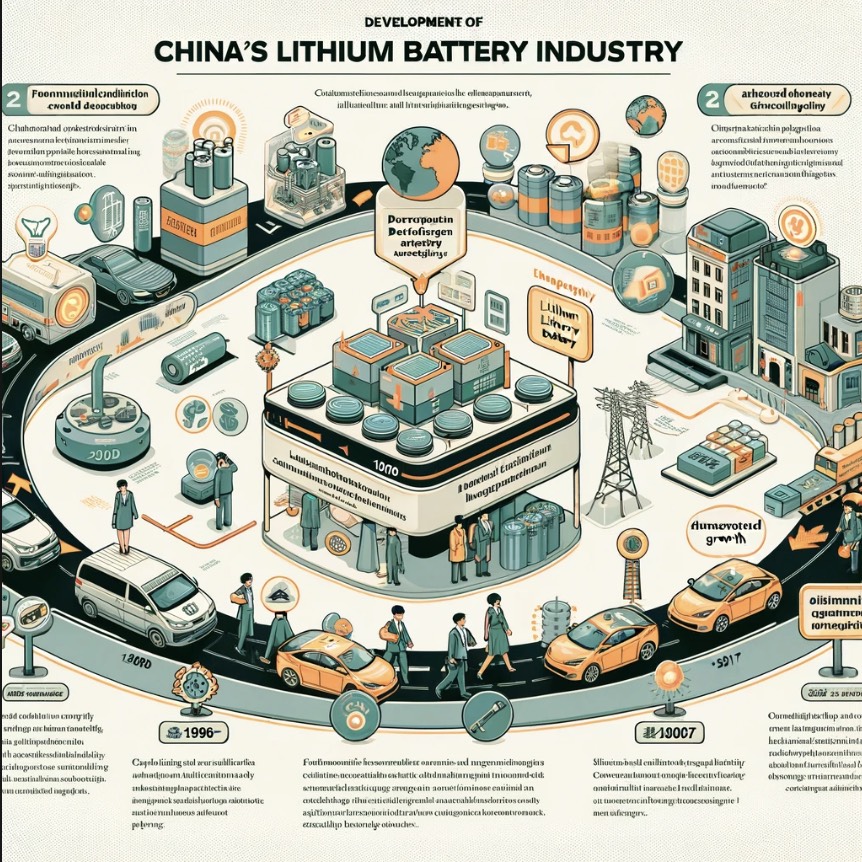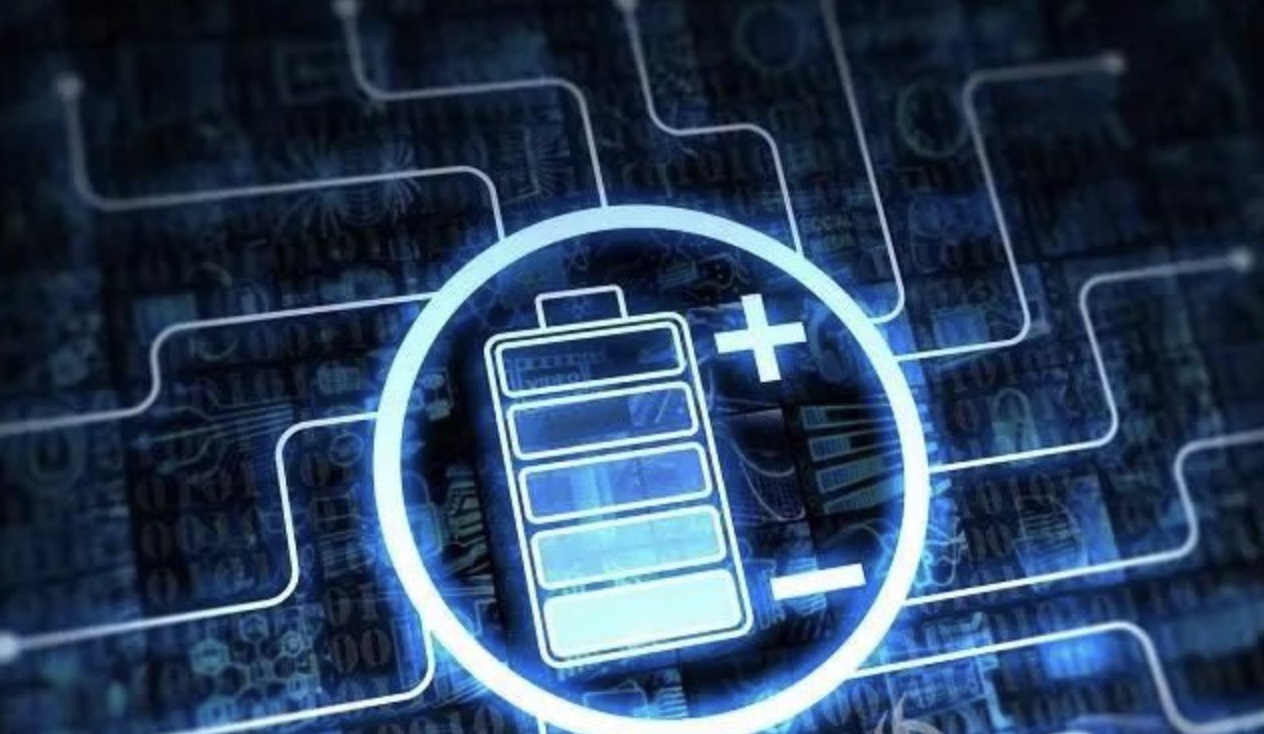The development trajectory of China's lithium battery industry is a compelling case study in global industrial evolution, characterized by rapid growth, technological advancement, and strategic government support. This journey, from its nascent stages in the early 1990s to becoming a global powerhouse by the 2020s, offers insights into China's approach to capturing and dominating emerging high-tech markets.
The embryonic phase of China's lithium battery industry was marked by foundational research and development, heavily influenced by technology transfers from abroad. During this period, China's focus was on assimilating and improving existing lithium battery technologies, with an emphasis on applications for consumer electronics, which were beginning to see exponential global demand. The government's role was primarily supportive, offering a conducive environment for research but without the heavy investments seen in later years. The industry's output was modest, primarily catering to domestic needs with limited export.

The real turning point for China's lithium battery sector came in the mid-2000s when the government identified renewable energy and electric vehicles (EVs) as strategic industries for the country's future economic transformation. This recognition was accompanied by substantial state investment in research and development, favorable policies, and incentives for both manufacturers and consumers of lithium battery-powered products.
Subsequently, China's lithium battery production capacity expanded rapidly. By leveraging its existing manufacturing prowess, access to critical raw materials (China holds a significant portion of the world's lithium and cobalt reserves), and government subsidies, Chinese companies began to scale up production and reduce costs dramatically. This period also saw significant advancements in battery technology, including improvements in energy density, longevity, and safety, propelling Chinese manufacturers to the forefront of the industry.

The government's strategic vision extended beyond domestic production and market leadership. It aimed to position Chinese companies as key players in the global supply chain for lithium batteries. Policies were enacted to encourage exports and the establishment of manufacturing plants abroad. Moreover, Chinese firms engaged in aggressive acquisition strategies, securing resources and establishing footholds in foreign markets.
By the early 2020s, China had established itself as the dominant force in the global lithium battery market, controlling a significant portion of the production capacity and setting industry standards. Chinese companies, such as CATL and BYD, became leading suppliers of lithium batteries, not only for consumer electronics but also for electric vehicles , energy storage systems , and other applications .
This ascent was not without challenges. The rapid expansion led to concerns over environmental sustainability, resource depletion, and geopolitical tensions over raw material access. Yet, the industry's growth trajectory underscores China's ability to identify and capitalize on emerging technological trends, supported by a coordinated strategy of government backing, investment in R&D, and a focus on international market integration.
The current landscape of China's lithium battery industry showcases a formidable global presence, underpinned by extensive production capabilities, cutting-edge technological innovation, and robust government support. As of the latest data, China not only leads in lithium battery manufacturing capacity but also dominates the global market share, reinforcing its pivotal role in the supply chain for a vast array of products, from electric vehicles (EVs) to portable electronics and large-scale energy storage solutions.
One of China's most significant advantages in this sector is its comprehensive and well-established manufacturing ecosystem. This ecosystem spans the entire supply chain, from mining and processing raw materials like lithium and cobalt to the production of battery cells and their integration into complete systems. Such vertical integration allows for unparalleled efficiencies, cost advantages, and the ability to rapidly scale production in response to market demands.
Technological innovation is another cornerstone of China's dominance in the lithium battery industry. Chinese companies are at the forefront of research and development in this field, continuously pushing the boundaries of battery performance, including energy density, charging speed, safety, and longevity. This relentless pursuit of advancement has not only enhanced the competitiveness of Chinese battery manufacturers but also contributed significantly to the global transition towards clean energy and electrification of transportation.
Government policies have been instrumental in fostering this environment of growth and innovation. Substantial investments in research and development, generous subsidies for EVs, and stringent environmental regulations have all played a role in accelerating the industry's advancement. Moreover, China's strategic approach to securing access to critical raw materials, both domestically and through international partnerships, ensures a stable supply chain that supports its ambitious production targets.

In summary, China's current standing in the lithium battery sector is characterized by its unmatched production capacity, technological leadership, and strategic government support. These factors combine to not only solidify China's position as a global leader in the lithium battery market but also position it as a key enabler of the worldwide shift towards sustainable energy and transportation solutions.
The ascendancy of China in the lithium battery industry has not only reshaped the global energy landscape but has also cemented its pivotal role in the march towards a more sustainable and electrified future. With its unparalleled manufacturing capabilities, technological prowess, and strategic government backing, China has established a dominant position in the lithium battery market, influencing global trends in energy consumption, automotive transport, and beyond.
However, this leadership comes with its set of challenges. The industry faces increasing international competition, raw material supply constraints, and environmental concerns related to mining and battery disposal. Moreover, the rapid pace of technological change demands continuous innovation to maintain a competitive edge, especially as global markets evolve and new players emerge.
Amid these challenges lie significant opportunities for future development. The ongoing global transition to renewable energy and electric vehicles presents a vast market for lithium batteries, promising continued demand growth. Additionally, advancements in battery technology, such as solid-state batteries, offer the potential for breakthroughs in energy density, safety, and cost-effectiveness, which could further solidify China's lead in the sector.
To capitalize on these opportunities and navigate the accompanying challenges, collaboration and innovation across the industry and beyond are paramount. It is crucial for Chinese companies, international partners, governments, and research institutions to work together to foster an environment conducive to technological advancements and sustainable practices. This includes addressing environmental impacts, improving recycling technologies, and ensuring ethical sourcing of raw materials.
Among the companies at the forefront of China's lithium battery innovation is Novoxy Power , a manufacturer specializing in portable power stations. Novoxy Power exemplifies the innovative spirit and technological capability that underpin China's leadership in the lithium battery industry. With a focus on providing reliable, clean, and accessible power solutions, Novoxy Power contributes to the broader goals of energy sustainability and electrification. Their products, designed for a wide range of applications from outdoor recreation to emergency power backup, underscore the versatility and potential of lithium battery technology to enhance everyday life and advance environmental objectives.
In conclusion, China's influence and status in the lithium battery sector are undisputed, driven by a combination of strategic foresight, industrial might, and innovation. As the industry progresses, embracing collaboration, prioritizing sustainable development, and fostering innovation will be critical for China and its global partners. By doing so, they can ensure that the lithium battery industry continues to thrive, supporting the transition to a cleaner, more sustainable energy future worldwide.